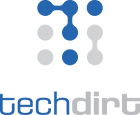Research Director Of BSA Study Admits BSA Is Misleading The Public
from the and-you-hide-it-at-the-end-of-the-article? dept
Two weeks ago we noted that the BSA had
come out with their latest bogus study on the numbers concerning losses associated with illegal software copying. The main problem we had with that study (as with any such study) is the ridiculous assumption that every piece of copied software is a "lost sale," as well as the failure to admit that unauthorized copying often also has a positive result in introducing the software to those who can't afford it -- but who later do buy it when they can. Now, buried at the end of a NY Times piece that mostly focuses on the ridiculous
INDUCE Act, is the fact that IDG, who did the study for the BSA,
admits that the BSA is being purposely misleading in how they presented the results. The article quotes the research director at IDG saying that they believe approximately 10% of copied software represents a lost sale, and that they call the total number they came up with "the retail value of pirated software." It was only once the BSA took the study and started promoting it, that they called it "sales lost to piracy." Considering the number of laws that get put in place because of misleading studies like this, shouldn't this be top-of-the-article news, rather than hidden down at the end? Meanwhile, the BSA responds to the claim by saying it doesn't really matter if the real number is "a little lower." I had no idea that numbers inflated by a factor of 10 were just a little bit off...


Reader Comments
Subscribe: RSS
View by: Time | Thread
No Subject Given
[ link to this | view in thread ]
No Subject Given
[ link to this | view in thread ]
Converse Accountability
[ link to this | view in thread ]
Compare to retail
The BSA states that $80B of software was installed last year. However, the $80B assumes $29B was pirated. If you adjust that as $2.9B of pirated software, you get total software installation value of $54B. This gives a "shrinkage rate" of 5.4% - about triple the average for retail.
[ link to this | view in thread ]
They failed to count open source software
So the bulk of open source software was treated as pirated copies of BSA member applications.
So suppose BSA surveyed customers install an average 6 applications bought from from BSA members. OSS users are presumed to be using an average 6 applications from BSA members, but those sales are not there, they're using OSS. The BSA presumes they are pirated software instead.
You can confirm this from their own numbers.
See figure 5, they assert a linear relationship between their rates of piracy and their vendor revenue. A country's rate of piracy is linearly linked to the revenue of vendors.
But that makes no sense, open source software usage is far higher in some countries than others (typically high pirated software countries like Thailand use no OSS software, they just pirate the commercial apps, while Finland and Germany use high levels of OSS because they have lower rates, but higher commercial application prices which drives them to OSS).
The only way to get that linear relationship is to treat open source software installs as pirated copies of commercial applications!
[ link to this | view in thread ]